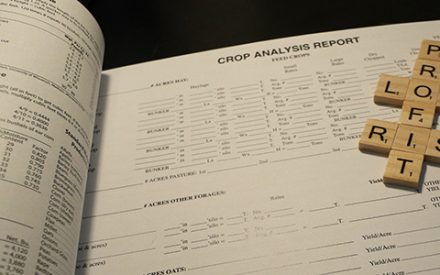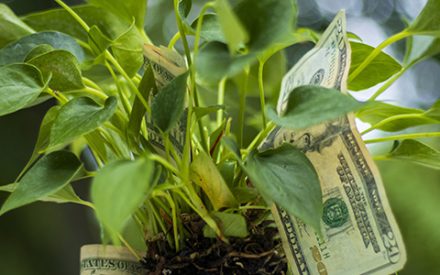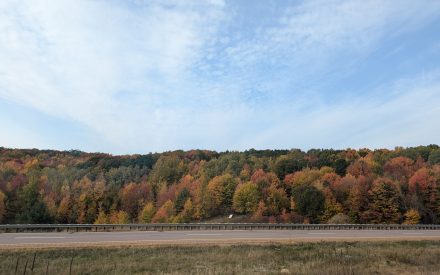Video Summary
In this video, Dr. Erin Silva, professor of organic agriculture at UW–Madison, shares practical spring strategies for organic weed management in grain systems. Focusing on mechanical cultivation, she emphasizes the importance of timing, soil conditions, and equipment setup.
Dr. Silva discusses delayed planting to allow for weed flushes, the use of blind cultivation tools like tine weeders and rotary hoes, and the role of row cultivators in managing between-row weeds. She also touches on flame and electrical weeding as rescue options and highlights the importance of soil tilth and crop advantage in organic systems.
Resources
Transcript
0:05
Thank you, Jerry, and it’s great to be here with you all.
0:07
I think I was a little ambitious with that description.
0:10
I’m happy to come back at some other point and talk more about rotation strategies.
0:15
I’m going to focus today’s brief talk on more of the mechanical weed management aspect that probably have more immediate decisions for the effective spring and summer weed management of organic grain systems.
0:31
So really focusing on the mechanical cultivation part of it. Organic weed management also is is very, very reliant on designing a effective crop rotation, picking which crop variety might be most weed suppressive, looking at cover crop strategies.
0:49
So it’s very much a holistic systems based approach, but I’m really going to try to dive in more to equipment based decision making.
0:59
As Jerry said, I’m a professor of organic agriculture.
1:02
I’ve been working in organic agriculture in the state since 2006.
1:06
It’s hard to believe I’ve been here for almost 20 years now, but it’s it’s been great to work with the organic farmers in Wisconsin.
1:13
So there’s some general rules of thumb when you’re thinking about organic grain production in general and particularly as it relates to effective weed management.
1:23
Probably one of the hardest things in the transition from conventional to organic production is the delay in planting date.
1:32
And when it comes to setting up a field for effective weed management, you don’t want to rush.
1:41
And there’s a couple reasons for that.
1:43
First is you don’t want to plant a crop into cold soils.
1:49
As we saw from the average soil temperatures just previously in the last few slides, we’re just hitting about that 55° mark.
1:57
That’s where we want to be for organic production.
2:00
So really this is the time frame that organic farmers are getting out and planting their corn in their soybeans and sometimes planting soybeans
2:08
before corn so instead of thinking about an April planting date, early May planting date, it’s much better to wait until those soil temperatures are warmer.
2:20
There’s a couple of reasons for that.
2:21
First is because we can do some false seed bedding and I’ll talk about that in a second, which means that we can get some flushes of weeds growing and then be able to draw down the weed seed bank.
2:34
And 2nd is because we want that seed to be able to the crop seed to be able to pop out of the ground quickly.
2:41
One of the rules of another rule of thumb for organic weed management is we always want the crop to have an advantage over the weed.
2:50
We always want the crop to be bigger than the weed to have effective cultivation.
2:54
So we want to plant that seed into warm soil and into warmer projected temperatures so we can get that seed and that crop out of the ground as quickly as possible and continue to have that crop bigger than the weed.
3:08
So we want to wait until the conditions are right, not only the soil temperatures and the air temperatures, but also we don’t want to get out into wet soils.
3:17
And I realize that that is the case in conventional farming as well.
3:20
But particularly for effective cultivation, we need to make sure we have a good seedbed, a nice even seedbed and soil that will flow through the cultivator.
3:31
So rushing and trying to go out into wet soils, trying to get out into cold soils will only set an organic farmer up for a challenging weed management situation.
3:41
Spending time setting up equipment not only before the growing season, but also in the field, taking time to get off the tractor, look to see how the cultivation equipment is performing, seeing what it’s doing to the weeds.
3:54
And spending that time upfront to make sure everything is effective and operating appropriately is going to save time and it’s going to make a more effective situation in the long run.
4:06
And the last is to cultivate early and often.
4:10
So I know especially transitioning from conventional to organic, those passes over the field, that’s more fuel, that’s more time, that is compaction that soil disturbance.
4:22
But again, to be effective in organic weed management, cultivation equipment, it’s better to do more passes than less.
4:29
And it’s best to get out there soon after the crop has been planted, even within 36 hours after crop planting with some of your blind cultivation passes.
4:41
So again, timing and not rushing, it’s not just the day of planting that you’re worried about.
4:47
You ideally want a period that you can also get out and do those early cultivation passes.
4:53
Easier said than done.
4:54
Mother Nature is not always cooperative, but that’s what we want to be looking for.
5:00
So some pre plant tillage, that importance of seedbed preparation.
5:03
I mentioned stale and fall seed bedding.
5:06
There’s I think some debate in terms of the exact definition of each of these.
5:10
But essentially what we’re doing is we’re trying to set ourselves up for planting into a situation where either have drawn down the weed seed bank or have already done some weed management.
5:21
So with organic farming, typically what we’re trying to do is let those seeds germinate.
5:25
Again.
5:26
It’s one of the reasons why we’re delaying our crop planting, going through with a very shallow field cultivation.
5:33
So typically we might do a chisel plowing, disking, let the weeds flush and then go in it with a field cultivator, level out that field trying not to draw up more weed seeds, but but getting the the seeds that have germinated, the weeds that have been germinated and create a cleaner condition to plant the crop into.
5:53
Again, always thinking we want to give the crop the advantage over the weed.
5:58
We want to ideally allow one flush of weeds if possible.
6:01
Having two flush of weeds is wonderful, but at least let one flush of weeds come up.
6:06
Do a shallow field cultivation.
6:10
You can also follow with some other tools to manage those weeds, A rotary hoe, a tine weed, or a harrow.
6:16
And if you’re doing these multiple weed flushes, space them about 8 to 10 days apart.
6:22
And don’t do that last pass too close to planting because we do want to let these weeds grow before versus the same time as the crop.
6:30
You always want to give the crop the advantage.
6:34
Tilth matters for cultivation.
6:37
Loose soil is going to shake off the the weeds better.
6:41
And if that soil is stuck to the weed roots, they could re-root.
6:45
So we want loose soil that’s going to shake off of the weed roots and we also want loose soil that’s going to flow through the cultivator and it’s going to help with not only our blind cultivation passes but also our rogue cultivation passes.
7:00
So having good soil tilth, having good seed bed preparation, not going into cloddy soil is going to give more uniform coverage of our cultivation equipment.
7:10
I mean, it’s also going to help with weeds in the crop row.
7:13
And when we’re talking about mechanical cultivation, often times we can come through later with equipment to get the weeds between the crop row.
7:21
But to get those weeds within the crop row is the most challenging part of organic weed management.
7:26
And one of the ways we can do that more effectively is this good soil tilth.
7:31
So this is a cartoon just emphasizing if we’re going into the soil wet, if we’re working the soil that we’re having clods, if we’re not doing these more soil finishing passes, these black lines right here representing a blind cultivation tool, a tine weeder that is going to not allow that soil to flow.
7:52
And you’re going to have these weeds that are going to be harder to disrupt and these passes are not going to be as effective.
8:00
So moving on to crop planting, like I said before, and I can’t emphasize this enough and this is again one of the most challenging mindset changes from conventional to organic.
8:10
We want to delay the planting.
8:12
We don’t want to rush.
8:14
Typically in most parts of Wisconsin, we’re waiting until about the 30, the third week of May, waiting till that soil temperature is consistently at about 55°F and it’s going to allow for this better flushing of weeds and it’s going to let the crop get ahead of the weeds.
8:30
We want to wait for good weather conditions.
8:33
Again, easier said than done, especially if we get into a wet pattern.
8:37
But it’s also we want to not only think about planting date, but emphasizing a really observational, are the conditions right?
8:46
Is the forecast going to allow us to get some of these early cultivation passes in?
8:53
And again to emphasize if we’re planting early time to emergence of the crop is going to decrease drastically if we’re planting into the cold soil temperatures and that’s going to give the weeds the advantage and that’s going to cause challenges for especially that in-row management.
9:10
So one of the other things with organic, which is why we’re emphasizing that warmer soil temperature is because of the fact that we’re doing these blind cultivation passes with tine weeders and rotary hoes,
9:21
we want to plant that seed a little bit deeper into the soil, so ideally about two inches deep.
9:28
So these darker brown seeds, these are representing a soybean or a corn seed.
9:33
The lighter yellow circles are representing the weed seeds.
9:37
So if we’re planting a little bit deeper, it allows us to set our tine weeder or rotary hoe a little bit more shallow and be able to flush out some of those more shallow germinating weeds.
9:49
So wait ’til the soil warms up, plant a little bit deeper, do your blind cultivation passes.
9:56
So these are just some estimates of the effectiveness of three key pieces of mechanical weed management equipment and organic production, a tine weeder, a rotary hoe and a row cultivator and showing four different classes of weeds, broad leaves, grasses and perennial weeds, how each of these might be effective.
10:21
So in terms of annual broadleaves, those are typically our easiest to manage with mechanical weed management and organic, we can have effective management with these blind cultivation tools, tine weeders and rotary hoes as well as the row cultivator.
10:36
Annual grasses are a bit more challenging in organic production.
10:39
They’re easier to slip through the tine weeder and rotary hoe, we can get them with a row cultivator.
10:45
But again, we need to be a little bit more strategic with our in-row weeds and in terms of setting our row cultivator to be able to to manage those effectively if we’re not able to directly hit them with the row cultivator.
10:57
Perennial weeds, this is where we’re really more dependent on some of these systems based strategies.
11:01
It’s hard to manage perennial weeds using mechanical equipment.
11:06
So our Candida thistles, our quack grass, we’re really looking at rotation strategies, cover crop strategies and other management strategies to make sure we keep these weeds at bay.
11:17
And this middle graph here, it shows from the different stages of weeds from emergence to cotyledon to the different growth stages of the weeds.
11:28
The row cultivator, we have the widest window of effectiveness.
11:32
The row cultivator is quite aggressive.
11:35
We can effectively be able to kill weeds even up to the larger growth stages.
11:41
But again, we’re limited to the between row zone with the row cultivator.
11:47
But the blind cultivation tools of tine weeder and rotary hoe that are going to allow for that in-row management.
11:54
That’s where we really need to make sure we’re getting in early and hitting those fields frequently and early and often.
12:01
So the tine weeder, it’s pretty effective with weeds early on.
12:07
And these are some of the estimates in terms of how quickly we can get through the field.
12:12
Rotary hoe, it’s best with really, really small weeds.
12:15
I want to make sure I’m going through this quickly.
12:18
Just if you don’t know what it looks like, the left-hand side is a picture of a tine weeder, right-hand side picture of a rotary hoe.
12:26
Absolutely key tools for in row weed management, essentials for organic weed management.
12:34
Timing is everything.
12:35
You want to get these at what’s called the white thread stage, which is as small as the weed looks on the right hand side of this penny.
12:43
So often times like this is a quote that I’ve heard from farmers.
12:47
If you can see the weeds from the tractor, you’ve gone in too late.
12:51
And this is where that early and often getting out looking to see if you see and dig down and see germinating weeds, that’s when you want to get into the field.
13:00
This is a publication we have.
13:02
We can share this out with everyone if they want it.
13:05
Just some recommendations in terms of for corn and soybean, when to go out and tine weed, what speed, how aggressive to set the tine weeder and what you might expect in terms of crop losses.
13:16
So I don’t want to belabor this given the the time constraints.
13:19
We do have a publication that we can share out rotary hoe similar stages to the graphs I showed before again and we have that information if people want to see them.
13:30
But emphasizing the weeds have to be small.
13:33
You have to get out there at this right time.
13:35
You have to get out there early.
13:37
Row cultivation, this is where it’s a wider window of effectiveness.
13:41
You can be a bit more aggressive.
13:44
This can kill weeds either by desiccation, dismemberment, which sounds pretty, pretty extreme, but you’re essentially severing the root from the shoot and also burial.
13:55
So this is important.
13:56
We’re talking about getting those in-row weeds escaped is that the row cultivator might not be hitting those directly.
14:02
But essentially what we’re doing is we’re setting the row cultivator that it’s moving the seed into the corn row or into the soybean row and burying those weeds.
14:11
So there’s some art and some set up that can help cultivation be more effective at different weed crops and weed and crop stages.
14:22
Again, with anything with organic management, including row cultivation, you can organic management does not allow for a lot of rescue treatments.
14:30
And if you let the weeds get too big, there’s going to be no tool that’s going to save you.
14:34
It’s better to actually till up and replant.
14:38
But some of the more like rescue type treatments or different tools that could help you in wetter conditions if you can’t get into the field.
14:47
A flame weeder is one.
14:49
Not all organic farmers use it, but some do.
14:52
The effectiveness depends on the stage of the weed.
14:56
The type of weed.
14:58
Timing is important with a flame weeder.
15:01
Depending on if you’re doing corn and soybeans, you want to time it right so that you’re effectively killing the weed, but you’re not harming the crop.
15:09
Electrical weed management is one of probably the most effective cleanup methods if you do have weed escapes.
15:19
This is a tool that there are farmers that do contract work, so you, a farmer might not own one of these, but there are farmers that have one that they do own and will bring it on to other farms and typically charge an hourly rate.
15:34
I just want to end with some of our resources.
15:37
I know I went through that really, really quickly.
15:39
I’m happy to follow up with any questions.
15:41
We do have a ton of resources on our website.
15:44
OGRAIN is is what I call my organic Extension program.
15:48
If you Google OGRAIN UW or UW Madison, you’ll get to the website.
15:52
We also have a YouTube channel that has a lot of weed management videos from past conferences and we also have a cultivation video series to show how to effectively cultivate and set up.
16:04
So again, I know I ran through that, but I wanted to keep on time.
16:07
Happy to answer any questions.
16:11
Alright, thank you, Ein.
16:13
I appreciate you spending time to share our your expertise with us.
Badger Crop Connect
Timely Crop Updates for Wisconsin
Second and fourth Thursdays 12:30 – 1:30 p.m.
Live via Zoom

 ▶ Fall 2025 Financial Assistance for Producers
▶ Fall 2025 Financial Assistance for Producers ▶ Fall 2025 Ag Policy Update
▶ Fall 2025 Ag Policy Update ▶ Fall 2025 Corn and Soybean Market Outlook
▶ Fall 2025 Corn and Soybean Market Outlook ▶ November 6 Ag Weather Outlook for Wisconsin
▶ November 6 Ag Weather Outlook for Wisconsin


